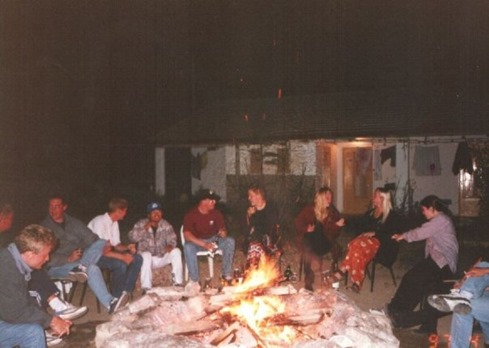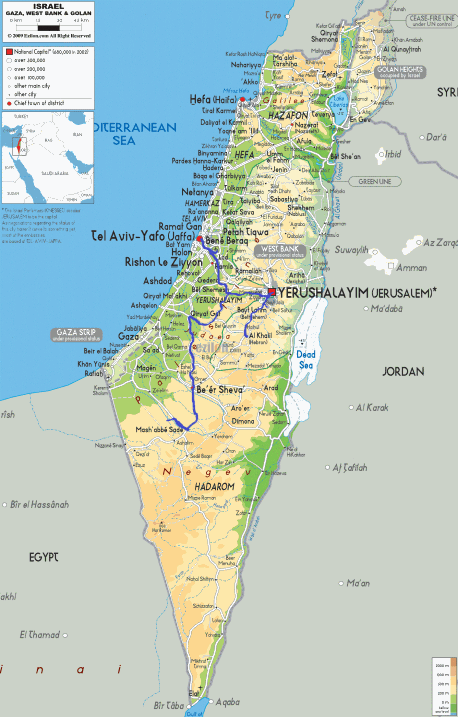Greetings!
Today I want to talk about someone who has really inspired me this last few weeks. His name is Mike and you might recall that he was my travelling companion on both my Poland 2012 trip and Berlin to Łódź expedition in 2013.
That is not however, what I wish to talk about today. Mike is in his fifties, had a nice house that he rented for a reasonable price but a job that he was unhappy in. He wanted a change in his life, but then, as we all know, that is easier said than done. Then, a few months ago, my old boss, Mr. Popov from the George Byron School in Bulgaria called me. He needed a teacher; did I know anyone?
The end result is that last week Mike started teaching at the school where I spent such a happy year teaching over a decade ago, working for the best boss that I have ever come across. That alone is pretty cool, but to have such courage to risk a safe job and nice house for all that when in your fifties is, to me, truly awe-inspiring.
So Mike, I salute you, and best of luck. Oh yes, and if you do end up writing any blog posts about your time, let me know eh, and I’ll link them up to UTM.
Keep travelling!
Uncle Travelling Matt
 With Mike in Berlin
With Mike in Berlin
Links to other parts of the travelogue:
Sacred Pilgrimage
Part 2: Ash Wednesday in Jerusalem
Part 4: Exploring the Old City
Part 7: Up the Mount of Olives
Part 8: Further explorations of Jerusalem
Secular Pilgrimage
Part 2: An Introduction to Kibbutz Living
Part 4: The Silence of the Desert
Part 6: Tearing down the Wall!
Part 7: Beautiful (?) Beersheva
Part 9: Reminders of Troubled Times
We took the bus one day to Beersheva. We’d hoped to hire a car and to drive up to the Dead Sea, but I’d forgotten to bring my driving licence and they wouldn’t accept Thao’s as she’d only passed her test six months before. Instead we explored – or in my case, re-explored – the city centre.
As volunteers we visited Beersheva regularly. It was the only place that one could get to easily on the bus and it was the nearest place that sold vodka which was not available on Revivim. Kibbutzim attract a wide spectrum of volunteers, from religious nuts to hippies, recluses to backpackers, but there seemed to be a high proportion with alcohol issues and a social life based around drinking vodka around a bonfire every evening was not really conducive to their rehabilitation. Several got thrown off the kibbutz during my stay due to their inability to work, but that is, as they say, another story. All you need to know now is that we needed vodka and Beersheva was the place to get it.
My abiding impression of Beersheva was of a soulless dump. From its concrete bus station to its bland shopping centre, (the Kanyon), to the grid-iron streets of the Old City, (old in that it dates from the 1960s, the rest is much newer), I could recall nothing positive or endearing about the place. However, having travelled extensively in the intervening years and discovered that so many of the world’s cities present a bland exterior to the world but can hold much more for those who cause to seek it out, I wondered if my memory was not being unkind to Beersheva.
It was not. If anything Beersheva was worse than I’d remembered it being. It is an indescribably tatty and soulless place. Its only selling point is a mock-up of an ancient well in the central square, (a tribute to Beersheva’s only mention in the Bible as the place where God caused a spring to gush forth for the benefit of Hagar and Ishmael), but even that is now broken and vandalised.
 Beersheva’s highlight: a faux ancient well
Beersheva’s highlight: a faux ancient well
It hadn’t changed much since my last visit, but what changes there were interested me. There was a smart new railway station, (part of Israel’s rail revolution discussed earlier, for back then there were no passenger services to the city), by the bus station. That at least meant it was easier to leave these days which was heartening to know. The other change was more subtle but more important; Russian had replaced English as the city’s second – or even first – language. There were Russian shops and signs everywhere and it was heard everywhere in the streets. Beersheva’s population has doubled since my first visit and those newcomers were virtually all from the former Soviet Union. It now resembled some shitty provincial Siberian city transplanted into the desert.
But with less character.
We did not stay for long.
 The stunning architecture of Old Beersheva
The stunning architecture of Old Beersheva
I have talked about the Ulpan students but it is perhaps more important to talk about the volunteers since they were the people that I spent the majority of my time with. And first and foremost must come my initial roommates and workmates on the chicken farm: Tom van den Ouden and Christoph Geiser.
Tom was Dutch, tall and with long hair. I didn’t like him. That first day, whilst I was still wondering why I’d volunteered myself for a sentence on a labour camp, I held my very first conversation with him sat outside our dwelling in the Ghetto. It went something like this:
Matt: Hi, my name’s Matt. I’m from England.
Tom: I am Tom, I am from the Netherlands. Do you like music?
Matt: I like Jefferson Airplane.
Tom: I have never been keen on their music.
Matt: I also like Bob Dylan.
Tom: I prefer Bowie. He was more innovative.
Matt: Your English is excellent.
Tom: I do not speak English because I love the English, I speak it because I have to speak it. Nobody speaks Dutch.
Matt: I feel bad for not knowing another language. I should like to learn Dutch.
Tom: Why would you learn Dutch? It is pointless for you to learn Dutch; the Dutch all speak English.
Matt: This kibbutz seems ok.
Tom: It is a shithole. The last one we were at was better. That also was a shithole but it was better than this one.
Matt: I heard that the chicken farm is a hard place to work.
Tom: It is easy. I am not afraid of work and that is easy work.
Matt: But the smell!
Tom: You get used to it.
Matt: Do you like Israel?
Tom: No, it is a shithole.
Matt: Oh.
 Conversations around the bonfire
Conversations around the bonfire
I later learnt that it is a Dutch trait to be defensive, confrontational, annoying, call it what you will, on initial meetings, but I found it rude and so took a dislike to the man. Not that I let him know of course; whilst the Dutch may be inclined towards abruptness, the English veer towards politeness – or falsity, depending upon how one chooses to look at it – and that dislike slowly turned into tolerance. The Dutch, I now know, have a habit of being cold until they are sure that they can trust a man and after that they’re the best friends that you could wish for. So it was with Tom. About three weeks after our meeting for the first time, he suggested that we go for an evening walk which culminated by climbing atop a pile of hay bales by the dairy farm. Lying on those bales gazing up at the numberless stars of the crisp desert sky, he told me his life story; of his childhood in a small town on an island in the Rhine-Maas Delta; of his grandmother who exhorted him to see something of the world and in whose footsteps he had journeyed to the Holy Land. On that day a friendship began which endures to this day. If the birthday party in the Ulpan Room had inspired a lifetime of travel, then Revivim must also be credited with finding me my most enduring travelling companion. Tom and I have journeyed to Switzerland, Japan as well as our own native countries, but most importantly you can also find him as the Lowlander in my travelogue detailing my epic journey in 2002 from Japan to Bulgaria, a trip which he shared with me from Seoul to Moscow.[1] It is no coincidence that my son, who was the main reason behind this trip to the Holy Land, is also named ‘Tom’. He was named after his godfather.[2]
But it wasn’t just Tom that I shared a room with in the Ghetto, for just as crucial to the experience was Christoph Geiser, the third member of a troika christened ‘The Three Musketeers’ by the other volunteers. Whereas Tom was initially cold, Chris was warm and welcoming. He was a quiet man with a big heart, a love of Motorhead and a wicked sense of humour. He hailed from a small village named le Fuet in the French-speaking Jura Mountains of Switzerland, but had spent much of his youth in the Ivory Coast where his parents were missionaries. We all enjoyed Chris’ company on the kibbutz but years later, when travelling to Switzerland to see him, I realised that all was not as hunky dory with the jovial rocker as we’d all assumed. Early in his youth in Africa, Chris had contracted malaria which, although cured, had left him with a form of schizophrenia. This couple with a penchant for hard drugs was not a winning combination, which was further exacerbated by the fact that he was a man torn: both Africa and Switzerland were home but Africa was where his heart lay and where he wanted to be. The money for daily existence however, lay in Switzerland and so he could only ever spend a few months in the Ivory Coast. When travelling and particularly when he was in Africa, (for Tom went with him once and relayed it all back to me), he was the happy-go-lucky fellow we knew so well on the kibbutz, but in le Fuet he was melancholy and depressed and turned to his drugs for comfort. It was very sad to see.
[1] ‘Across Asia with a Lowlander’
[2] And the doubting saint, and my grandfather, and the tank engine.



No comments:
Post a Comment